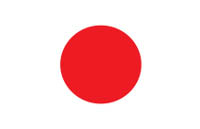Japan has always been an expat-friendly destination with its high standard of living, comprehensive social welfare systems and interesting cuisine. It is also a unique country that offers many exciting experiences and activities that you probably won’t find in any other country in the world. Here are 5 experiences you must try in Japan.
Take a hike
Japan’s Northern Alps are called the “Roof of Japan” and are a popular destination for hiking trips. You can begin a trek from the town of Kamikochi, which is the gateway to the Alps, and hike your way up many peaks that make up the Kita Alps.There are comfortable mountain lodges that serve as rest stops along the way, which offer breathtaking views of mountain scenery and also where you can meet fellow-hikers.
Other interesting hiking destinations in Japan include Daisetsuzan in Japan’s largest national park in Hokkaidō, also called ‘Big Snow Mountain’; the semi-active volcano in Kyūshū; and the mountain peaks of Yakushima. If you feel up to it, you can even attempt the 12,388 feet-high Mt. Fuji, the highest peak in Japan.
Spend a night in a ryokan
Ryokans are traditional Japanese rooms made from wood with a tatami-matted floor. They are a far cry from regular hotel rooms, as you are not permitted to walk in your shoes and have to sleep on the floor. But ryokans offer a taste of simplicity with their basic but beautiful interiors. They are elegantly decorated with a simple, yet comfortable sleeping mat or futon. You are given a pair of slippers to wear and a yukata, a Japanese robe similar to a kimono, to lounge in.
Most ryokans usually overlook an ornamental garden. The communal bathing areas are separate for men and women. You can also expect the best of treatment at many Japanese ryokans. You will be greeted with a tray of Japanese tea and the meals are traditional, usually made from local produce. Some ryokans are located near hot springs and bathing in these hot springs is an experience in itself. You can book a ryokan depending on your budget. The prices vary with the highly sophisticated ones being on the more expensive side and the smaller, less luxurious ones being more affordable.
Watch sumo wrestlers in training
For a truly Japanese experience, attend an early morning sumo wrestling session called asageiko. This may prove to be even better than attending a sumo-wrestling tournament because here you get an up-close and personal view of the sport. To avoid paying a fortune, have a Japanese speaker call in advance and ask for permission. The sessions usually begin at 6 am and last for three to four hours. There are some rules of etiquette to be followed at these places such as maintaining silence, sitting on a zabuton or cushion on the floor and refraining from taking photographs while the session is on.
Soak in a hot spring
Japanese has over 3000 hot springs or onsens, and soaking in them is another must-have experience. The country has a tradition of using these natural spring waters for healing and relaxing. One of the oldest and most famous hot springs in Japan is Dogo Onsen in the Shikoku island. Other popular hot springs include Ōedo Onsen Monogatari in Odaiba near Tokyo Bay, where you can also get spa treatments and massages; Takaragawa Onsen in Gunma, which has the largest open-air bath in the country; and Sawada-kōen Rotemburo Onsen in Dōgashima, which sits high on a cliff with a view of the Pacific Ocean.
Have a traditional meal
Many high-end restaurants and ryokans in Japan offer Kaiseki, the traditional Japanese multi-course meal. This dining experience is almost like an art form where taste, texture and aesthetics are blended to perfect balance. The ingredients used are fresh and undergo cooking techniques that best enhance their natural flavors, and dishes are carefully decorated and arranged on the table. For a more high-end experience, there is the Michelin star restaurant Hamadaya in Tokyo where you can sit for a 10 to 12 course meal consisting of unique delicacies, mostly seafood. For more affordable kaiseki, there is Shakunage in Ginza, in central Tokyo, which offers a terrace-top dining experience.

